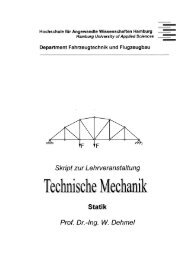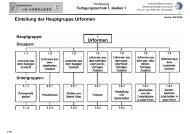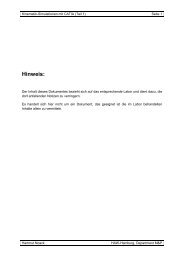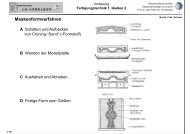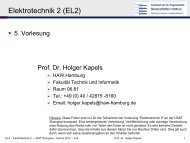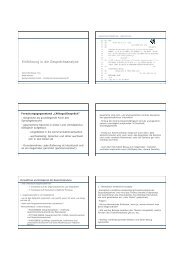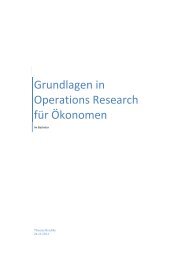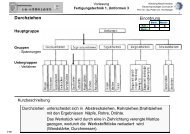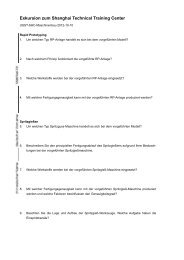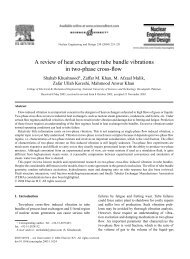Cryogenic Thermal Insulation Systems
Cryogenic Thermal Insulation Systems
Cryogenic Thermal Insulation Systems
You also want an ePaper? Increase the reach of your titles
YUMPU automatically turns print PDFs into web optimized ePapers that Google loves.
<strong>Cryogenic</strong> <strong>Thermal</strong><br />
<strong>Insulation</strong> <strong>Systems</strong><br />
16 th <strong>Thermal</strong> and Fluids Analysis Workshop<br />
Orlando, Florida<br />
August 9, 2005<br />
James E. Fesmire<br />
Stan D. Augustynowicz<br />
<strong>Cryogenic</strong>s Test Laboratory<br />
NASA Kennedy Space Center<br />
Aug 2005 CryoTestLab 1
Outline<br />
Introduction<br />
Part 1, Materials<br />
Part 2, Testing<br />
Part 3, Applications<br />
Conclusion<br />
Aug 2005 CryoTestLab 2
INTRODUCTION
HEAT IS THE ENEMY
Two things about cryogenics<br />
Store a lot of stuff in a small space<br />
Energy density<br />
Use the cold temperature to do something<br />
useful<br />
Refrigeration<br />
Space launch and exploration is an energy intensive<br />
endeavor; cryogenics is an energy intensive discipline.<br />
Aug 2005 CryoTestLab 5
<strong>Cryogenic</strong>s now touches on nearly<br />
every aspect of modern society<br />
Food<br />
Health and medicine<br />
Energy<br />
Transportation<br />
Manufacturing<br />
Research<br />
Aerospace<br />
Aug 2005 CryoTestLab 6
<strong>Cryogenic</strong>s on Earth and in space<br />
Cryogens must be stored, handled,<br />
and transferred in safe and<br />
effective ways<br />
<strong>Cryogenic</strong> usage and application is<br />
being extended to the rest of the<br />
world in the first half this century<br />
People working in cryogenics are<br />
becoming more and more<br />
specialized<br />
Aug 2005 CryoTestLab 7
For progress and efficiency<br />
into the 21 st century, high<br />
performance thermal insulation<br />
systems are needed….<br />
Aug 2005 CryoTestLab 8
Energy Efficiency on Earth<br />
Spaceport facilities<br />
Energy integrated launch site<br />
Propulsion + Power + Life Support<br />
Advanced transfer and storage methods<br />
Propellants and gases production<br />
Novel components and instrumentation<br />
New material applications<br />
<strong>Thermal</strong> insulation structures<br />
Cost-efficient storage and transfer<br />
of cryogens<br />
Aug 2005 CryoTestLab 9
Energy Efficiency in Space<br />
Space exploration<br />
In-space depots<br />
Moon base<br />
Mars base<br />
Other destinations<br />
Mass-efficient storage<br />
and transfer of cryogens<br />
Aug 2005 CryoTestLab 10
Energy Efficiency for Industry<br />
Industry<br />
Hydrogen Transportation<br />
Superconducting Power<br />
Processes & Applications<br />
Aug 2005 CryoTestLab 11
<strong>Thermal</strong> <strong>Insulation</strong> <strong>Systems</strong><br />
System Integrated Approach<br />
Active + Passive<br />
Hot Side + Cold Side<br />
Energy and Economics<br />
Perspective<br />
Performance must justify the cost<br />
Save $$ on energy bill<br />
Two Things About <strong>Insulation</strong><br />
Conserve energy (or mass)<br />
Provide control of system<br />
Aug 2005 CryoTestLab 12
PART 1<br />
MATERIALS
Background<br />
Historical perspective<br />
D’Arsonval in 1887 to Peterson in 1951<br />
WW II to H2 bomb to Apollo<br />
Conventional materials<br />
Perlite to multilayer to foam<br />
Novel materials<br />
Aerogels to sol-gel aerogels<br />
Composites old and composites new<br />
Aug 2005 CryoTestLab 14
Basics about Materials<br />
Three Basic Forms<br />
Bulk Fill<br />
Foams<br />
Layered<br />
Basic Design Factors<br />
Definitions: k-value and CVP<br />
Aug 2005 CryoTestLab 15
Bulk-Fill <strong>Cryogenic</strong> <strong>Insulation</strong> Materials<br />
Aug 2005 CryoTestLab 16
New Materials<br />
Cabot, aerogel beads (Nanogel®)<br />
Aspen Aerogels, aerogel blankets<br />
(Pyrogel® and Spaceloft®)<br />
Sordal, polyimide foams (SOLREX®)<br />
Inspec Foams, polyimide foams<br />
(SOLIMIDE®)<br />
TAI, pipe insulation panels<br />
NASA, Layered Composite <strong>Insulation</strong><br />
(LCI)<br />
Aug 2005 CryoTestLab 17
Performance<br />
Price versus performance<br />
R5 or R1500, its your (extreme) choice<br />
Overall Efficiency, four basic factors:<br />
1. <strong>Thermal</strong> conductivity<br />
2. Vacuum level ($$$)<br />
3. System density or weight<br />
4. Cost of labor ($$) and materials ($)<br />
Aug 2005 CryoTestLab 18
1. <strong>Thermal</strong> Conductivity<br />
Material thermal conductivity<br />
milliWatt per meter-Kelvin [mW/m-K]<br />
R-value per inch [hr-ft 2 -degF/Btu-in]<br />
1 mW/m-K = R144<br />
Apparent thermal conductivity<br />
k-value<br />
Real systems with large temperature differences<br />
Overall k-value for actual field installation<br />
k oafi<br />
Often one order of magnitude (or more!) higher than<br />
reported ideal or laboratory k-values<br />
Aug 2005 CryoTestLab 19
MLI System at HV<br />
LCI System at HV<br />
Aerogel Beads at HV<br />
LCI System at SV<br />
MLI System at SV<br />
Aerogel Composite Blanket<br />
Polyurethane Foam<br />
Fiberglass<br />
Cork<br />
Oak Board<br />
Ice<br />
Whale Blubber<br />
Concrete<br />
Stainless Steel<br />
Pure Copper<br />
<strong>Thermal</strong> Insulating Performance of Various Materials<br />
0.01 0.1 1 10 100 1000 10000 100000 1000000<br />
<strong>Thermal</strong> Conductivity (milliWatt per meter-Kelvin)
Representative k-values<br />
Material and Density HV<br />
Variation of k-value with<br />
cold vacuum pressure for<br />
glass bubbles in<br />
comparison with perlite<br />
powder and aerogel beads.<br />
Boundary temperatures are<br />
approximately 293 K and<br />
77 K. Residual gas is<br />
nitrogen.<br />
Apparent <strong>Thermal</strong> Conductivity k-value (mW/m-K)<br />
100<br />
10<br />
1<br />
0.1<br />
0.01 0.1 1 10 100 1000 10000 100000 1000000<br />
Cold Vacuum Pressure CVP (millitorr)<br />
Glass Bubbles, C137<br />
Perlite Powder, 9 pcf<br />
Aerogel Beads, C134
Variation of mean heat<br />
flux and total heat<br />
transfer with cold<br />
vacuum pressure for<br />
glass bubbles.<br />
Boundary temperatures<br />
are approximately 293<br />
K and 77 K. Residual<br />
gas is nitrogen.<br />
Heat Flux (W/m2) and Total Heat (W)<br />
1000<br />
100<br />
10<br />
1<br />
0.1 1 10 100 1000 10000 100000 1000000<br />
Cold Vacuum Pressure CVP (millitorr)<br />
H eat Flux, C 137<br />
Total Heat, C137
2. Vacuum Level<br />
System operating environment is<br />
Cold Vacuum Pressure (CVP)<br />
High Vacuum (HV), below 10 -4 torr<br />
Soft Vacuum (SV), from 1 to 10<br />
torr<br />
No Vacuum (NV), 760 torr<br />
CVP is the first system design<br />
question and the primary cost<br />
driver for most applications<br />
Aug 2005 CryoTestLab 24
3. Density<br />
Total installed density (or weight) is<br />
often critical for transportation<br />
applications<br />
Density, as related to thermal<br />
mass, is also important for control<br />
of process systems<br />
Aug 2005 CryoTestLab 25
4. Cost<br />
Performance must justify the cost<br />
Total heat flow, through insulation<br />
and all other sources, determines<br />
thermal performance requirements<br />
Manufacturing, maintenance, and<br />
reliability considerations are the<br />
key for determining overall cost<br />
Aug 2005 CryoTestLab 26
Aerogel Materials<br />
LIGHTER THAN AIR?
Aerogel Basics<br />
World’s lightest solid<br />
Lighter is not always better<br />
Special class of open-pore structure nano-materials<br />
Extremely low density (as low as several mg/cm 3 )<br />
High porosity (up to 99%)<br />
High surface area (over 1000 m 2 /g)<br />
Ultrafine pore size (as small as 2-nm radius)<br />
Derived from the supercritical drying of highly crosslinked<br />
inorganic or organic gels<br />
Sol-Gel processing methods<br />
Aug 2005 CryoTestLab 28
Flexible aerogel composite blanket, R&D 2003 Award<br />
winner, Aspen Aerogels and NASA-KSC<br />
Commercial products,<br />
Aspen Aerogels, Inc.
Aerogel Composite Processing<br />
Sol-Gel Process<br />
catalyst catalyst<br />
←<br />
Si(OEt) 4 + nH2O + mEtOH Si(OH) 4 + (m+n) EtOH SiO2 + 2H2O + (m+n) EtOH<br />
hydrolysis<br />
condensation<br />
RADIATION SHIELDING: Aerogels produced in<br />
opacified [molecular sieve carbon (MSC)] fiber<br />
matrix for inhibition of radiation heat transfer in the<br />
infrared range<br />
←<br />
Autoclave System
Aerogel Composite Heat Transfer<br />
AEROGEL COMPOSITE CONCEPT:<br />
Use ultralow density aerogels<br />
formed within a fiber matrix to<br />
produce a flexible superinsulation<br />
CORE OF THE TECHNOLOGY:<br />
Aerogels formed at the fiber-fiber<br />
contacts force solid heat transfer to<br />
occur through the very low thermal<br />
conductivity aerogels<br />
CRYOGENIC-VACUUM INSULATION:<br />
Minimize heat transfer modes by<br />
designing insulation system for a<br />
given set of operating conditions<br />
q = kA<br />
∆T<br />
∆ L<br />
k t = k s + k g + k r<br />
Total Radiation<br />
Solid<br />
Conduction<br />
Gas<br />
Conduction<br />
PORE SIZE<br />
k s<br />
k g<br />
k r<br />
BULK DENSITY<br />
PARTICLE LOADING<br />
SURFACE AREA<br />
SEM Micrographs of Aerogel/Fiber Composite
Aerogel Beads Production<br />
Large-scale production by Cabot Corp. in 2003<br />
Economical precursor: sodium silicate<br />
Bead formation using high throughput spray nozzle<br />
Aerogel produced by low cost process with ambient pressure<br />
drying step<br />
Waterglass Sol Hydrogel Silation<br />
Aerogel
PART 2<br />
TESTING
Experimental Research Testing<br />
Heat transfer through insulation<br />
materials must be understood by<br />
testing under actual-use,<br />
cryogenic-vacuum conditions<br />
Test methods and equipment<br />
Understanding test results<br />
Analysis and modeling<br />
Performance comparison of<br />
different materials<br />
Aug 2005 CryoTestLab 34
Comparison of <strong>Insulation</strong><br />
Test Methods<br />
Cryostats use steady-state liquid<br />
nitrogen boiloff calorimeter methods<br />
Different methods and devices are<br />
complementary and necessary<br />
New Cryostat methods provide<br />
practical capability for testing real<br />
systems<br />
Full temperature difference<br />
Full-range vacuum conditions<br />
Aug 2005 CryoTestLab 35
Comparison of ASTM Methods and New Cryostat Methods<br />
Method Type Sample<br />
ASTM<br />
C518<br />
ASTM<br />
C177<br />
ASTM<br />
C745<br />
Comparative, Heat<br />
Flow Meter<br />
Absolute, Guarded<br />
Hot Plate<br />
Absolute, Boiloff<br />
Calorimeter<br />
Cryostat-1 Absolute, Boiloff<br />
Calorimeter<br />
Cryostat-2 Comparative, Boiloff<br />
Calorimeter<br />
Cryostat-4 Comparative, Boiloff<br />
Calorimeter<br />
Delta<br />
Temp<br />
Boundary<br />
Temp Range<br />
(K)<br />
k-value<br />
Range<br />
(mW/m-K)<br />
Flat, square Small 273 to 383 5 to 500 ---<br />
Flat, disk Small 93 to 773 14 to 2000 ---<br />
Flat, disk Large 250/670 and<br />
20/300<br />
Heat Flux<br />
Range<br />
(W/m 2 )<br />
--- 0.3 to 30<br />
Cylindrical Large 77 to 300 0.03 to 30 0.8 to 120<br />
Cylindrical Large 77 to 350 0.1 to 50 2 to 400<br />
Flat, disk Large 77 to 350 0.5 to 80 6 to 900
Cryostat Test Methods<br />
Full temperature difference (T):<br />
Cold-boundary temperature (CBT), 78 K<br />
Warm-boundary temperature (WBT), 300 K<br />
Temperature difference, 222 K<br />
Mean temperature, 189 K<br />
Full-range cold vacuum pressure (CVP):<br />
High vacuum (HV), below 1×10 -4 torr<br />
Soft vacuum (SV), ~1 torr<br />
No vacuum (NV), 760 torr<br />
Aug 2005 CryoTestLab 37
Description of Cryostats<br />
Cryostat-1 and Cryostat-100<br />
Cold mass 167 mm dia. by 900 mm length<br />
Test specimens up to 50 mm thickness<br />
Cryostat-2<br />
Cold mass 132 mm dia. by 500 mm length<br />
Test specimens up to 50 mm thickness<br />
Cryostat-4<br />
Test specimens 200 mm dia. by up to 30 mm<br />
thickness<br />
Compressive load measurement (optional)<br />
Aug 2005 CryoTestLab 38
Cryostat-1
Cryostat-2
Cryostat-4
Example Test Series<br />
Cryostat-1
Performance Characterization<br />
of Perforated MLI Blankets<br />
Perforated multilayer insulation (MLI) blanket<br />
systems are targeted for large-scale cryogenic<br />
facilities. Space applications and particle<br />
accelerators are two fields concerned with thermal<br />
shielding of cryogenic devices.<br />
Because radiation heat transfer varies with T 4 , heat<br />
transfer in the range of 300K to 77K is dominant<br />
even for devices operating at temperatures as low<br />
as 2K.<br />
<strong>Systems</strong> operating under conditions of degraded<br />
vacuum levels are also a key consideration<br />
because of heat transfer by residual gas<br />
conduction.<br />
The results of an experimental study of a perforated<br />
MLI blanket system using a steady-state liquid<br />
nitrogen evaporation method are presented.
Experimental apparatus
Temperatute (K)<br />
350<br />
300<br />
250<br />
200<br />
150<br />
100<br />
50<br />
Temperature and CVP Profiles<br />
C135, 30 layers Jehier, 0.01µ<br />
Test 1, Run 1, 09/04/01<br />
RT D1 RT D2 RT D3 RT D5 RT D6 RT D7 RT D8 RT D9<br />
RT D10 RT D11 RT D12 RT D13 RT D14 RT D15 RT D16 TC1<br />
TC2 TC3 TC4 TC5 TC6 TC7 TC8 CVP1<br />
0 1 2 3 4 5 6 7 8 9 10 11 12 13 14 15 16 17 18 19 20 21 22 23 24 25 26 27<br />
time (h)<br />
0.1<br />
0.01<br />
CVP (microns)
Pressure (psig)<br />
1.2<br />
1.1<br />
1<br />
0.9<br />
0.8<br />
0.7<br />
0.6<br />
0.5<br />
0.4<br />
0.3<br />
0.2<br />
0.1<br />
0<br />
Liquid Nitrogen Pressures<br />
C135, 30 layers Jehier, 0.01m<br />
Test 1, Run 1, 09/04/01<br />
dP = P4 - P6<br />
P3, Manifold<br />
P5, Lower<br />
P4, Upper<br />
P6, Test<br />
0 1 2 3 4 5 6 7 8 9 10 11 12 13 14 15 16 17 18 19 20 21 22 23 24 25 26 27<br />
time (h)
Flow (scm 3 /min)<br />
500<br />
400<br />
300<br />
200<br />
100<br />
0<br />
Measurements of Boil-off and k-value<br />
C135, 30 layers Jehier, 0.01m<br />
Test 1, Run 1, 09/04/01<br />
19 20 21 22 23 24 25 26 27<br />
time (h)<br />
Flow<br />
k<br />
0.3<br />
0.2<br />
0.1<br />
0.0<br />
Apparent <strong>Thermal</strong> Conductivity k (mW/m-K
Apparent <strong>Thermal</strong> Conductivity (mW/m-K<br />
Variation of k-value with cold vacuum pressure for different MLI<br />
100<br />
10<br />
1<br />
0.1<br />
0.01<br />
0.01 0.1 1 10 100 1000 10000 100000 1000000<br />
Cold Vacuum Pressure (millitorr)<br />
Kaganer, MLI<br />
C108, 40 layers MLI<br />
C123, 60 layers MLI<br />
C135, Perforated MLI Blanket
Layer temperature profiles as a function of blanket thickness<br />
Temperature (K)<br />
310<br />
270<br />
230<br />
190<br />
150<br />
110<br />
70<br />
Layer 2<br />
Layer 1<br />
Layer 5<br />
Layer 10<br />
Layer 15<br />
0.0 0.5 1.0 1.5 2.0 2.5 3.0 3.5 4.0 4.5 5.0 5.5 6.0 6.5 7.0<br />
Layer 0, CBT<br />
Thickness (mm)<br />
Layer 20<br />
Layer 30, WBT<br />
0.011 millitorr, Test 10<br />
0.015 millitorr, Test 1<br />
0.1 millitorr, Test 8<br />
0.2 millitorr, Test 2<br />
1 millitorr, Test 3<br />
5 millitorr, Test 9<br />
10 millitorr, Test 4<br />
100 millitorr, Test 5<br />
1000 millitorr, Test 6<br />
5000 millitorr, Test 7
PART 3<br />
APPLICATIONS
Main Categories<br />
High Vacuum (HV)<br />
MLI or SI, microfiberglass, fine<br />
perlite, LCI, vacuum panels,<br />
aerogels<br />
Soft Vacuum (SV)<br />
Aerogels, LCI, vacuum panels<br />
No Vacuum (NV)<br />
Foams, cellular glass, fiberglass,<br />
aerogels<br />
Aug 2005 CryoTestLab 51
Examples<br />
HV: LH2 storage tank, Fuel cell<br />
tanks, MLI blanket for Large<br />
Hadron Collider (LHC)<br />
SV: Piping connections, Mars<br />
surface storage<br />
NV: Shuttle External Tank, LO2<br />
storage tank<br />
Aug 2005 CryoTestLab 52
New Applications<br />
Aerogel blankets for next-generation launch<br />
vehicle thermal protection<br />
Aerogel beads for cold box and non-vacuum<br />
applications<br />
Layered Composite <strong>Insulation</strong> (LCI), world’s<br />
lowest k-value system at soft vacuum level<br />
Glass microspheres for cryogenic tanks and<br />
structural applications<br />
Reusable polyimide foams for cryogenic<br />
tanks<br />
Aug 2005 CryoTestLab 53
CONCLUSION
There is a hot side and a cold side<br />
The energy WILL<br />
balance.<br />
We want to make it<br />
balance to our best<br />
advantage.<br />
Aug 2005 CryoTestLab 56
Materials Tested<br />
Multilayer insulation<br />
(MLI), various types<br />
Aluminum foil and<br />
fiberglass paper<br />
Polyester nonwovens<br />
Polyurethane foam<br />
Aerogel powder<br />
Aerogel beads<br />
Aerogel blankets<br />
Glass microspheres<br />
Polyimide<br />
microspheres<br />
Polyimide foams<br />
Layered composite<br />
insulation (LCI)<br />
Aluminized Mylar<br />
and polyester fabric<br />
Syntactic foam<br />
composites<br />
Micro fiberglass<br />
Perlite powder<br />
Modular cryogenic<br />
insulation (MCI)<br />
Various composite<br />
insulation systems<br />
Polystyrene<br />
And many others!<br />
Aug 2005 CryoTestLab 57
Research Testing Conclusion<br />
Well over 1000 cryogenic thermal performance<br />
tests of over 100 different thermal insulation<br />
systems have been produced by the<br />
CryoTestLab at NASA Kennedy Space Center<br />
Specific insulation systems must be optimized<br />
for best performance (such as lowest k-value<br />
and bulk density) under different vacuum levels<br />
All modes of heat transfer (radiation, solid<br />
conduction, gas conduction, and convection)<br />
must be addressed<br />
Aug 2005 CryoTestLab 58
Significance and Impact<br />
Invented new test equipment and methods<br />
for thermal performance characterization of<br />
insulation systems<br />
New standard for testing under actual-use,<br />
cryogenic-vacuum conditions<br />
Partnered in development of new products<br />
now on the market<br />
Aerogel composite blanket (Aspen <strong>Systems</strong>)<br />
Python vacuum-insulated piping (Chart-MVE)<br />
Aerogel beads for thermal insulation (Cabot)<br />
Aug 2005 CryoTestLab 59
Selected References<br />
Fesmire, J. E. and Augustynowicz, S.D., “Improved <strong>Thermal</strong>-<strong>Insulation</strong> for Low Temperatures,”<br />
NASA Tech Briefs, September 2003, pp. 54-55.<br />
Fesmire, J.E., Augustynowicz, S.D., Heckle, K.W., and Scholtens, B.N., “Equipment and<br />
Methods for <strong>Cryogenic</strong> <strong>Thermal</strong> <strong>Insulation</strong> Testing,” <strong>Cryogenic</strong> Engineering Conference, 2003.<br />
Fesmire, J.E., and Augustynowicz, S.D, “<strong>Thermal</strong> Performance Testing of Glass Microspheres<br />
under <strong>Cryogenic</strong>-Vacuum Conditions,” <strong>Cryogenic</strong> Engineering Conference, 2003.<br />
Williams, M., Fesmire, J., Weiser, E., and Augustynowicz, S., “<strong>Thermal</strong> Conductivity of High<br />
Performance Polyimide Foams,” Cold Facts, <strong>Cryogenic</strong> Society of America, Spring 2002.<br />
Fesmire, J. E., Augustynowicz, S.D., and Darve, C., “Performance Characterization of<br />
Perforated MLI Blanket,” Proceedings of the Nineteenth International <strong>Cryogenic</strong> Engineering<br />
Conference, ICEC 19, Narosa Publishing House, New Delhi, 2003, pp. 843-846.<br />
Fesmire, J.E., Augustynowicz, S.D., and Rouanet, S., “Aerogel Beads as <strong>Cryogenic</strong> <strong>Thermal</strong><br />
<strong>Insulation</strong> System,” in Advances in <strong>Cryogenic</strong> Engineering, Vol. 47, American Institute of<br />
Physics, New York, 2002, pp. 1541-1548.<br />
Fesmire, J.E., Augustynowicz, S.D. and Demko, J.A., “<strong>Thermal</strong> <strong>Insulation</strong> Performance of<br />
Flexible Piping for Use in HTS Power Cables”, in Advances in <strong>Cryogenic</strong> Engineering, Vol. 47,<br />
American Institute of Physics, New York, 2002, pp. 1525-1532.<br />
Augustynowicz, S.D. and Fesmire, J.E., “<strong>Cryogenic</strong> <strong>Insulation</strong> System for Soft Vacuum,” in<br />
Advances in <strong>Cryogenic</strong> Engineering, Vol. 45, Kluwer Academic/Plenum Publishers, New York,<br />
2000, pp. 1691-1698.<br />
Augustynowicz, S.D., Fesmire, J.E., and Wikstrom, J.P., “<strong>Cryogenic</strong> <strong>Insulation</strong> <strong>Systems</strong>,” in 20 th<br />
International Congress of Refrigeration Sydney, no. 2000-1147, International Institute of<br />
Refrigeration, Paris, 2000.<br />
Fesmire, J.E., Rouanet, S., and Ryu, J., “Aerogel-Based <strong>Cryogenic</strong> Superinsulation,” in<br />
Advances in <strong>Cryogenic</strong> Engineering, Vol. 44, Plenum Press, New York, 1998, pp. 219-226.
CHURCHILL’S COMMENTARY ON MAN:<br />
Man will occasionally stumble over<br />
the truth, but most of the time he will<br />
pick himself up and continue on



